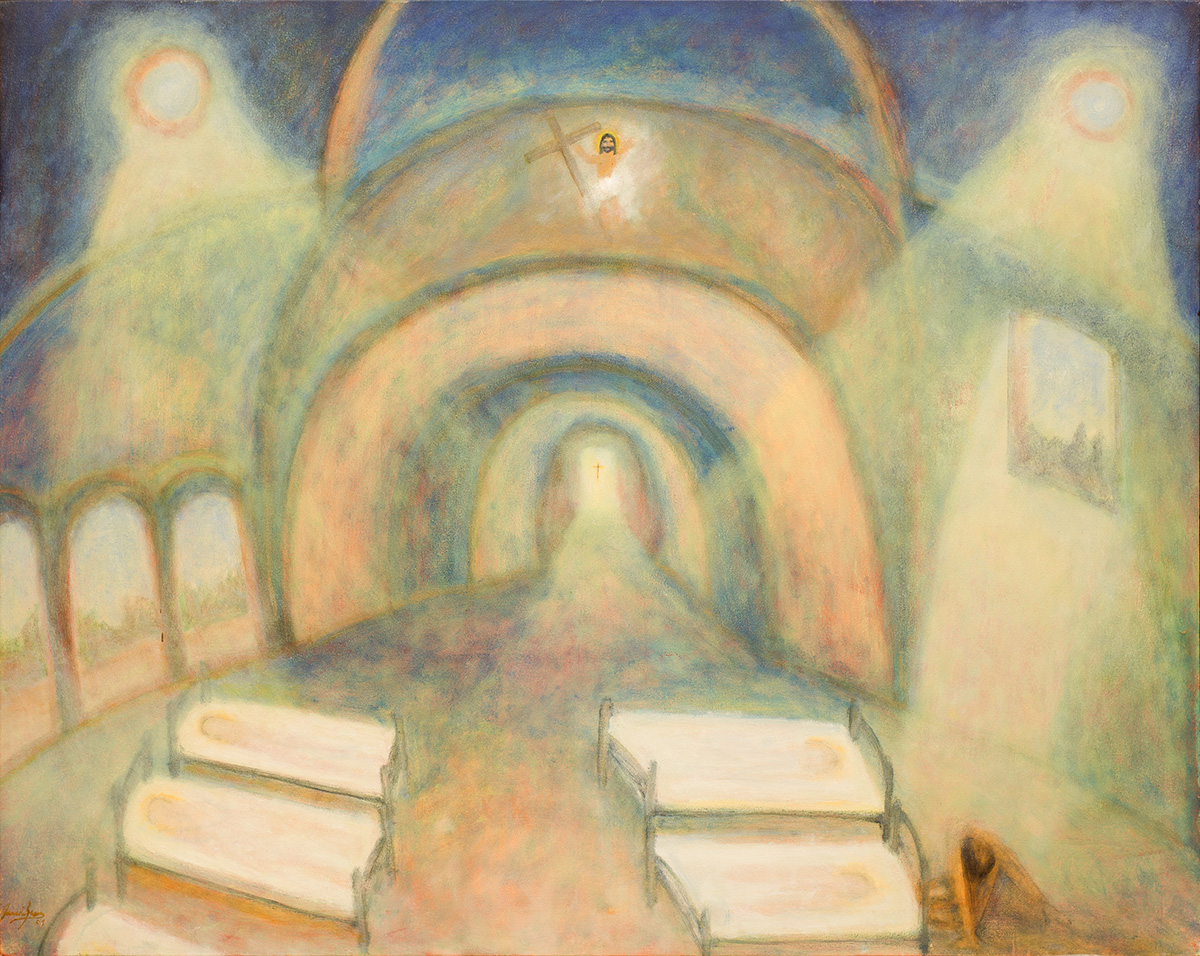SANTIAGO GARCÍA SÁENZ
JOINS THE COLLECTION OF THE CENTRE POMPIDOU, PARIS
Santiago García Sáenz joins the collection of the Centre Pompidou, Paris
Hache galería is honored to announce the acquisition by the Centre Pompidou of the work Deseando misericordia (2001) by Argentine artist Santiago García Sáenz (Buenos Aires, 1955-2006). Its acquisition was possible thanks to the generous support of the Centre Pompidou’s International Circle Latin America, as part of the ARTEBA 2022 Acquisitions Programme.
From early on, Santiago García Sáenz’s painting cultivated a sensibility that combined costumbrista images of everyday life and images of the fantastic bound to ecstatic states. The resulting figurative pictorial language vacillates between the real and the iconic in sometimes jarring fashion. His Catholic faith had great impact on his work, imparting a unique ethic of the image: sacred genres and biblical scenes introduced the problem of the afflicted body and light as redemptive force. His painting is both a way to recover an iconography of memory and a means to stage the experience of one’s own body. That poetics, which he used to reproduce travel scenes, landscapes, and local Americanist figures, also imbued his sacred images in a baroque logic of memory, dream, and ecstasy.
Deseando misericordia belongs to the Afflicted Christs or Christ in the Afflicted series that García Saénz started in early 1990, after he and fellow artist Liliana Maresca began working as volunteers with severely ill patients at the Hospital de Clínicas, a public hospital in Buenos Aires. The origin of the first work in the series is the story of confinement and pain a truckdriver hospitalized in the urology wing told García Sáenz, who immediately rendered it on canvas. That work was sold to artist Carlos Colombino, founder of the Museo de Barro in Paraguay—a venue where García Sáenz would show his work on many occasions. There are two clear points of reference for this series. The first is the Paraguayan War—a recurring theme in García Sáenz’s work after he began traveling to Asunción. The second is the HIV/AIDS crisis, which by this point had claimed the lives of many local artists and friends of García Sáenz. The spaces where these Christ figures are found vary widely, from lonely rooms to makeshift outdoor tents. The vision at play in these works is tied both to the long agony of the infirm and to a sudden wound in battle. Regarding this period, García Sáenz recalls that he had to bury many friends.
Paulo Miyada, curator of the Centre Pompidou’s Latin American Committee, comments on the work:
What is unique about how SGS paints this scene of melancholy and finitude is the way he develops a personal take on painting techniques very little evaluated by avant-garde and post avant-garde art to paint an atmosphere, a chromatic and luminous field that is as relevant for the perception of the painting as its figures and symbols. Including this SGS painting in the Centre Pompidou’s collection will be a strong move towards a layered understanding of gender and social issues in Latin America, and will push forward the possibility of reviewing chapters of art history that for some reason were mistaken or ignored at their time.
Deseando misericordia (Craving for mercy) was part of Quiero ser luz y quedarme (I Want to Be Light and Remain), the first institutional and anthological exhibition of Santiago García Sáenz since his death, presented at Colección AMALITA – Fundación Amalia Lacroze de Fortabat, Buenos Aires, between July and November 2021, curated by Pablo León de la Barra & Santiago Villanueva. A selection of works by the artist were presented at ARCOmadrid 2022 in Nunca lo mismo. Latin American Art, programme curated by Mariano Mayer and Manuela Moscoso.

